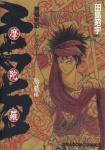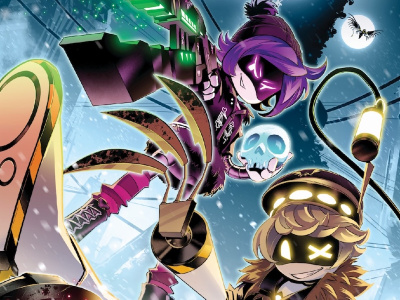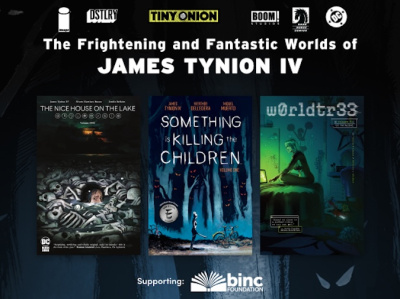
DC Comics has provided the details about its new CMX manga line, which will debut in October with three titles from three different Japanese publishers: Madara by Tajima Sho-u and Otsuka Eiji from Kadokawa, Mekakushi no Kuni by Tsukuba Sakura from Hakusensha, and Eroika Yori Ai Wo Komete by Aoike Yasuko from Akita Shoten. All CMX titles will be published in the traditional manga format (5' x7 3/8') with black and white interior art. Subsequent volumes in all the CMX series will be released on a quarterly schedule. DC has not yet released the standard cover price for its CMX line.
John Nee, VP of Business Development at DC, also announced the hiring of Jake Tarbox as the Group Editor for the CMX imprint. Tarbox has spent the last 14 years in Japan, where he worked at Coamix, Inc. and edited the manga magazine, Raijin Comics, which was published by Gutsoon in the U.S.
Two of the first three DC releases are shoujo titles, which is not surprising considering DC's President and Publisher Paul Levitz's observation: 'New readers, particularly girls and women, have rushed to embrace new talent from abroad.' Mekakushi no Kuni is the story of a high school girl, who sees visions of future events, while Eroika Yori Ai Wo Komete, which first appeared in 1977, follows the adventures of a British aristocrat and art thief. It may sound a little like another vintage series, Lupin III, but true to its shoujo origins in Princess Magazine, Eroika Yori Ai Wo Komete contains a great deal of research about European art history and has helped to popularize many European painters in Japan. October's lone non-shoujo title, Madara, which was the inspiration for a four-episode OAV series available in the U.S. from Mediablasters, is a fantasy/adventure complete with mystic quests, magic swords and a blacksmith hero.
DC also announced a number of other manga titles which CMX will be publishing in the future. Included in this group are a number of series with considerable potential: Fujii Mihona's GALS, Oh Great's Tenjo Tenge, Tanemura Arina's Kamikaze Kaitou Jeanne and Takanashi Mistsuba's Akuma de Soro, all from Shueisha, Takahashi Miyuki's 9 Banme no Musashi from Akita Shoten, Ariyoshi Kyoko's Swan from Akita Shoten, and Sei Ito's Monster Collection from Kadokawa.







